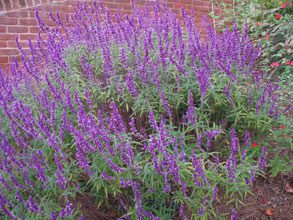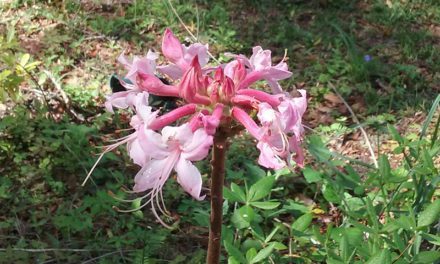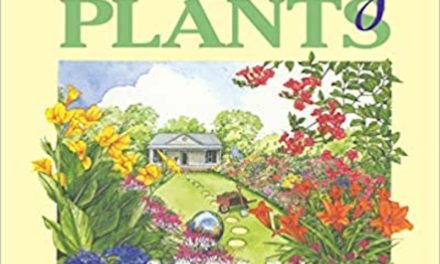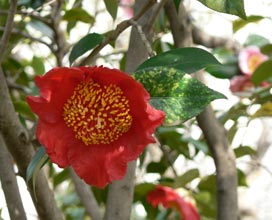 Fall is a cheerful time of year, mostly, with beautiful wild flowers and gardens blooming across the state. I have been known to rave about beautyberry bush with clusters of purple berries growing close to the stems.
Fall is a cheerful time of year, mostly, with beautiful wild flowers and gardens blooming across the state. I have been known to rave about beautyberry bush with clusters of purple berries growing close to the stems.
In the Lowcountry, fall can last for weeks or months. By late September some leaves may be starting to turn colors and beginning to shed. My fig tree is tired from producing all those lovely sweet brown summer fruits, and after Irma’s tropical storm force winds it is quite naked. Underneath are now exposed Gerbera daisies, ground covers and ferns. If you garden by the square foot every square should be covered. Bare ground means you either need to add mulch or more plants. Planting in layers gives additional interest to beds. An example of layering would be to combine species of different heights, colors and textures to create interesting compositions. Plant things that like shade under evergreen shrubs. By removing the lower limbs of small trees or shrubs, ornamentals that like filtered light can be grown underneath. Ferns are generally shallow rooted, and given enough moisture they will thrive as understory perennials or ground covers.
I am particularly fond of a fern that I bought years ago from a specialty nursery. It was growing on a patio in full sun with cactus and other succulents. It is one of the lip ferns native to Australia. At that time I didn’t have much full sun and decided to plant it under the fig tree and keep an eye on it. No regrets. It behaves very well in the bed and has spread and grown to a very manageable plant. The green fronds have dark brown stems and grow 18″ from the base.
Another small flowered shrub that keeps good company and blooms repeatedly throughout the fall is Serissa foetida. A cousin of boxwood serissa can have many forms: variegated leaves, blooms pink or white, single or double. I have all of them scattered around my yard; they also can be grown together as an informal hedge.
Some other fall favorites to rave about are the salvias: Mexican bush sage (Salvia leucantha), Brazilian “black and blue” (S. guaraniticia), United States (S. greggii), varieties and hybrids from Europe and Asia. They come in all the most favorite colors, love full sun, and have a real presence in the garden. There are salvia societies like rose, camellia, and boxwood societies. It doesn’t take a genius to see why people love this genus and so do butterflies, bees, and birds. The gorgeous tubular flowers have them all flocking for a drink of nectar. Said specialty mail order nursery has at least 41 different offerings of salvias. Most of them will be perfectly happy to grow if you have a yard. They will bloom longer and stronger if it’s also sunny. A bonus for gardeners frustrated by deer browsing is that the sage scent is unattractive to most herbivores.
Cheerful flowers, vines, fruits, nuts and leaves are abundant and setting the stage for a cooler, less chromatic season. Gardening and other outdoor activities are a lot more enjoyable when the heat and humidity are in 60s, 70s, and 80s.
Garden chores should include trimming dead branches and limbs, but no heavy pruning until late winter for summer-flowering shrubs and trees. You do want to fertilize the fall garden but not the lawn or shrubs until mid to late April. Pruning and fertilizers stimulate growth and fall is the time when plants are getting ready to go into dormancy. Keep up with irrigation and inspecting for insects or disease, but avoid using pesticides without a positive identification of the problem. Irrigation is not needed if rainfall exceeds 1″/week and can be cut off and run manually through the fall and winter months.
For more garden information:







